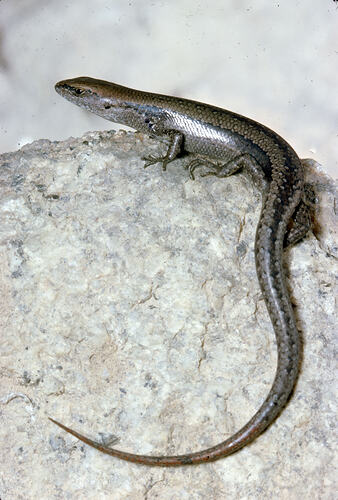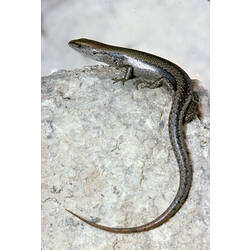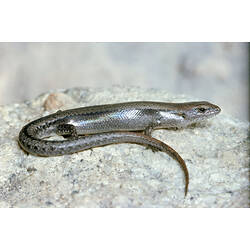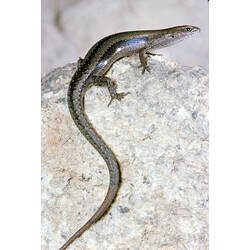General Description
Small, grey-brown or bronze skink, sometimes with stripe down back and a dark brown stripe from side of the neck to the tail. Belly is whitish with grey striations on the throat. Up to 6 cm long (snout-vent).
Biology
Delicate Skinks feed on small invertebrates. Females congregate to lay their eggs in communal nests, which can contain more than 200 eggs per nest (up to four eggs per female). They forage among leaf litter.
Distribution
East coast of Australia from north-eastern Queensland through eastern New South Wales and south eastern Victoria, south western Victoria and eastern Tasmania.
Habitat
Found in wide variety of habitats from rainforest edges, to coastal heaths and woodlands. Commonly found in suburban gardens.
More Information
-
Animal Type
-
Animal SubType
-
Brief Id
A small skink with a grey-brown to bronze back and striped sides.
-
Colours
Brown, Black, Bronze
-
Maximum Size
10 cm
-
Habitats
-
Diet
Invertebrates
-
Diet Categories
Insects, Invertebrates
-
Endemicity
-
Commercial
No
-
Conservation Statuses
CITES: Not listed, FFG Threatened List: Not listed, EPBC Act 1999: Not listed, IUCN Red List: Least Concern
-
Taxon Name
-
Scientific Author
(De Vis, 1888)
-
Common Name
Dark-flecked Garden Sunskink
-
Other Names
Delicate Skink
-
Kingdom
-
Phylum
-
Subphylum
-
Class
-
Subclass
-
Order
-
Suborder
-
Infraorder
-
Family
-
Genus
-
Species Name
delicata




